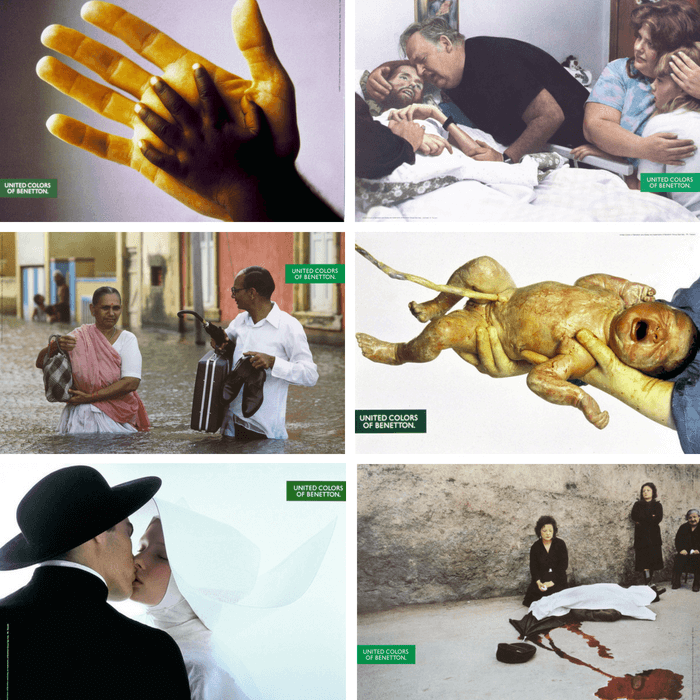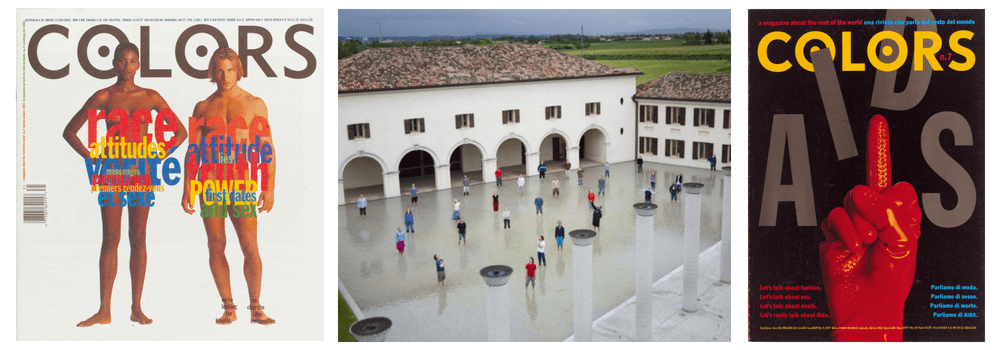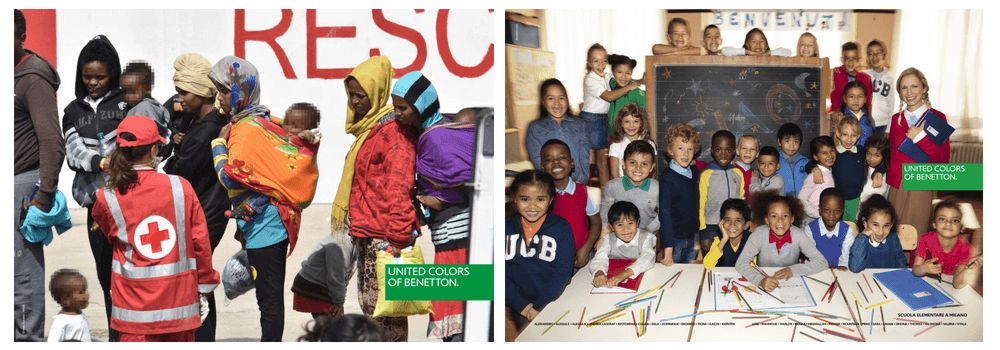One of the most important basic rules of marketing communication is: We don't buy products, we buy what we want to be. This rule always applies. At least if the product is not a designated commodity.
It all has a lot to do with status. We humans are always concerned with improving our status, and this often drives our decisions, big and small - where we work, what we eat, what we buy, where we go on holiday, what we read, what we binge-watch, what school we send our children to, who we vote for (or take the precaution of not voting), what sport we play (or don't play), etc. - everything has to improve our status.
Please do not understand status in a linear way and certainly do not confuse it with social class or conceit.
Our decisions are influenced by at least one of these four status questions, which we ask ourselves in a flash and subconsciously - not only when buying:
- Is this good for me economically?
- Does that expand my possibilities?
- Does this increase my safety?
- Does that raise my prestige?
Sometimes parameters 1-3 raise prestige simply because their value is generally known, or I can happily report on it.
In some product categories, "I buy what I would like to be" is more obvious than in others. With cars, for example, or with restaurants, or with holiday destinations. The well-trained daydreamers among us story insiders know what it's all about: would you rather buy a Lamborghini or a Ferrari, an Xbox or an Atari, Schick Shock or Bourani, Armani or yesterday's hoodie?
Yes, it's quite obvious with fashion.
How we dress says a lot about us, one way or another. First of all, it has nothing to do with vanity and certainly nothing to do with funny labelled T-shirts. Our clothes are the second shell of our soul.
And then it is generally difficult for the clothing industry to talk about facts in its communication, apart from functional clothing, but not really there either. Well-managed (fashion) brands have a story!
It is true that many fashion brands have great products of a well-known quality, a striking logo, elaborate advertising campaigns, well-known faces as actors/testimonials/ambassadors. All of this is good and necessary, but it should never be confused with a brand, because it is nothing more thanadvertising with a high proportion of publicity, the effect of which depends massively on the budget pressure behind it. And certainly not a story.
Brand story, for example, is this:

This also works with Moving image is also excellent. Here, relationship is created through meaning, and the story heart starts to beat faster and more powerfully.
The example with the greatest insight into brand story and fashion is Benetton and its transformation into United Colors of Benetton. But even those who do not work in the fashion industry can draw a lot of nutritional value from it and modulate it for their own work.
After the Benetton group had produced a lot of substantial problems in the past few years in addition to clothes, company founder and clan boss Luciano Benetton, although already well into his eighties, felt compelled to take the helm again in order to turn it around in the direction of success. He brought Oliviero Toscani, who is not quite 80 yet, back into the company as a pillion passenger. That sounds like the perfect set-up for the final chapter of a corporate tragedy, which doesn't have to be the case, although I can't think of any spontaneous counter-example apart from the great Bellheim I can't think of a counter-example, but that's another story.
Story insiders who were already clothed in the 90s probably remember the then legendary campaigns with which the duo Luciano & Oliviero broke completely new ground, provoked controversy and made advertising history. The northern Italian clothing producers became the talk of the world from 1982-2000 until the two protagonists parted ways.
Company boss Luciano Benetton took the view at the time that if he had to advertise, then he wanted to use his appearance sensibly and draw the world's attention to the burning issues of the day.

With its colours and patterns,Benetton brought a new colourful variety to the fashion world, which was still very monotonous at that time - even in Italy. I found the idea of United as a brand mission and then to consistently rename the Benetton brand to United Colors of Benetton to be excellently thought out and done, and I still consider it courageous and exemplary today, but with one clear restriction. The world was already sufficiently informed about war, racial problems, AIDS and poverty even without Benetton advertising and the - probably unintentional - cynicism of the action outshone the actually brilliant communication idea for me, as long as the big words and clear images were not followed by courageous deeds.
Gradually, the advertising campaign expanded into a brand experience - Benetton launched the magazine Colors, opened the media creative lab Fabrica and supported projects with social relevance, from culture to poverty alleviation to diversity. By and large, they left it at that.

The strategy in the interweaving of brand & mission is still gold standard and also of what the products achieve and the brand purpose promises an almost unique stroke of luck.
So here we go again, picking up the thread where it left off some time ago. That's what I think is a problem.

Because even if the topic of integration is a burning one worldwide and needs every positive support, it is certainly no longer as simple as Oliviero Toscani imagines and makes it. In the beautiful, smoothly polished world of fashion, to provide dramatic reportage pictures with the Benetton labeland to advertise for Fashion with naked people that's not only a hat from the day before yesterday, but also one on which Torquato Tasso's words are embroidered in thick letters: " ... and even if she has the intention of doing good to friends, one feels intention and one is disgruntled." United Colors of Tralala ...
I am convinced that companies can, should - indeed, must - make their contribution to shaping our society as positively as they can, with all the responsibility they can, just like each and every one of us. This includes what they do, how they do it and how they behave - corporate behaviour, corporate communications, corporate culture - especially companies with a power like Benetton.
In our time, in which antagonism is becoming an increasingly dominant force in our society, and in many countries populists are driving people, countries and Europe apart with their self-optimisation and vote-maximising centrifuge, there is a sheer need for everything that unites.
The good news for brand management: United thus serves a current very strong counter longing and bristles with all the greatest potential for success if one manages not only to postulate but to activate. Then that would not only be good, but good for something, then that would be useful. Being useful is one of the most important differentiators of content marketing and surreptitious advertising.
Why doesn't Benetton make people bearers of the campaign in all the countries where the group operates? There is a common longing here that can be shared and distributed. And who knows, maybe at some point people will not buy products but what they want to be ...
Especially a company with such an impressive history as Benetton should by no means leave it at display advertising + charity - out of social responsibility and out of the benefits that could be derived for a strong brand. Benetton would have every chance of setting up a positive, socio-politically valuable movement. Maybe it will come. If not: too bad ...
To avoid falling into the Benetton trap, the following six first steps and seven central questions for purpose-driven brand stories will help you:
- Find the purpose from the brand's genetic values.
- The theme must activate an essential core value of the brand, something worth fighting for.
- The brand purpose must be an authentic concern for the company. Would you also stand up for it without it bringing advertising benefits to your brand?
- A brand purpose must contribute to the benefit of the audience.
- The audience must be activated and not remain passive observers. In this way, they become an integral part of the brand purpose.
- The message must be T-shirt-compatible, i.e. it must be possible to communicate both the message and the wording in a concentrated way.
So ask yourself this:
-
- What value is in danger if we do not exist? What value or longing do we stand for and fight for, what do we make possible? Where does our meaning lie? In the 1984 Apple campaign freedom was in danger, saved by the Macintosh .
- So what issue can we credibly and authentically make our heart's desire? If the first thing you think of is a Good Cause , that's right in principle but not necessary. The range of topics is wide and includes the initiative for True Beauty by Dove, which is concerned with a realistic, self-confident image of women beyond embellished Photoshop girls, as well as a semi-serious rebellious Be Stupid postulate by Diesel in the initiative for successful living.
These examples show very well how diverse such issues can be. BUT BEWARE! What these campaigns lack, or what Dove lacked for a long time, is the extension into real life with usable and useful content. You are caught in the Benetton trap, because most of the time it just remains a proclamation and does not lead to a real change, to tangible action, to a sustainable experience of the brand mission. Mantra-like, I refer at this point to the exemplary school book example Always #likeagirl - Who is our common opponent? A common opponent creates a sense of belonging, strength and necessity. If other people also have the same goal, the security of social proof is created: I am right because others, whom I consider relevant and credible, also consider it right. The common opponent that is important for the brand story is therefore very rarely your competition, but usually something quite immaterial. In the 1984 Apple campaignit was Big Brother in the shape of IBM/Microsoft/HP, in the Think Different campaign it was the Ungeist, which stood against the new, fresh, inspired, against the improving change of the world. With Benneton it is the divisive.
- What is our common longing? Jyn Erso says the significant phrase in Rogue One "We have hope. Rebellions are built on hope!" The longing for change can only ever be fueled by hope, because there are no facts about the future. Every leader, therefore, needs a good story to inspire that hope. Hope, they say, dies last. The opposite is true: hope lives first. What is true for women leaders of rebellions is equally true for brands, because brands promise their audience a positive change in their field. This will rarely be a rebellion, nonetheless, you should know the central hope of your brand story and make it an asset to your communications. "Am I activating the shared longing?" is the control question of all your ideas and actions, so that you stay On Strategy and don't die in well-intentioned beauty. If the common longing is not activated, then either the idea is good, but not for your brand, or you need to improve it.
- How do we mobilise our inner strength?
Authenticity is the lifeblood of any serious brand story. Without authenticity, the result is at most a well-disguised advertising campaign on the sneak path into the wallet of end consumers. Authenticity begins in the company itself. Only what is already there can be activated. Genuine brand stories are not discovered, but found. Often you have to search for it for a very long time, sometimes you don't find the brand story, but the brand story finds you. This is a difficult process, it can take time, detours are unavoidable. Almost always, the discovery of the brand story triggers changes in the company. The team must be committed to the common goal. Everyone in the team must first recognise the value of the brand story for themselves. Every employee must be able to directly experience the significance for herself. - How do we develop a culture - our storyworld?
Around a mission, a culture develops almost automatically, which can certainly be compared to a cult. It is about codes like a common language - about terms, beliefs, symbols, imagery, a lifestyle, an attitude - yes, as always, about values that have become visible. With these codes, the group identifies itself, tells its "we". Identification is created through these codes, and the group can be identified from the outside through them. You can see this, for example, in football clubs or Formula 1 teams, in fashion trends and tribes, in fan clubs of rock bands, in airlines and of course in brands. The logo, the corporate design, which image worlds we use, which claims, in which tonality we speak, where we meet each other. The storyworld are those - quite imaginary - places where a brand and its audience meet and interact. - How do we activate our audience?
Everyone is constantly striving, in big and small ways, to improve their status, to show their status and to get feedback for it. This is part of the "Who am I?" exploration. Status does not mean up or down, rich or poor, but the situation itself, the circumstances - see Facebook status update.
If your brand can contribute to this, then it is in the right place, in the relevant place, because then your audience will report about it in the appropriate form, because it tells about itself. For this, you need occasions and impulses in which the audience can participate. With postings, with personal presence, with likes, with shares, with uploads, with inter-action. This is how your brand story spreads through earned media.
Create those pushes, because that's the best and only way you can participate in the many-voiced, limitless, everlasting conversation that began on the WorldWideWeb on 6 August 1991. Bring something of value to the party. This is real content marketing away from the usual buzzword hype that produces nothing but surreptitious advertising, noise before defeat.With real content, the return on investment of your marketing communication turns into return of involvement and return of engagement, and that really counts. Then your audience gives you their most valuable asset: their time. Time with Brand is the greatest reward a brand can get from its audience. So don't let your brand mission starve on the surface of advertising!
The principles are very simple and universally valid. The implementation of these principles is damn difficult, labour-intensive and will not have an effect overnight, as a short-term price promotion does. But in fact, I am firmly convinced that this is the only way brands can go in our completely changed media world if they want to survive.
I know what I'm talking about, because I've got a lot of years of advertising under my belt and I've got a lot to show for it ...
So if you don't just want to talk about the price, but respectfully engage with your audience, then engage people with a story that is relevant to both of you. That's how it's done today, beyond advertising.
Or, as my grandmother, old Story Dudette, knitted into my jumper with a hot needle: "No Story. No Glory."
Picture credits
© Schöffel
© United Colors of Benetton
Cover picture: Naked, Just Like | Photo: Oliviero Toscani
Picture composition of 6:
Top left: S/S 1990, "Hands" | Photo: Oliviero Toscani
Top right: S/S 1992, "AIDS - David Kirby" | Concept: Oliviero Toscani | Photo: Thérèse Frare
Middle left: S/S 1992, "Flood" | Concept: Oliviero Toscani | Photo: Steve McCurry - Magnum
Centre Right: S/W 1991, "Newborn baby" | Photo: Oliviero Toscani
Bottom left: F/W 1991, "Priest and nun" | Photo: Oliviero Toscani
Bottom right: S/S 1992, "Murder" | Concept: Oliviero Toscani | Photo: Franco Zecchini/Magnum
3-picture composition:
Left: COLORS 4: Race Cover | Photo: Colors Magazine/Oliviero Toscani
Middle: FABRICA & its people | Photo: Reed Young/FABRICA
Right: COLORS 7: AIDS Cover | Photo: Colors Magazine/Pieter Hugo
2s picture composition:
Left: Migrants Images | Photo: Orietta Scardino / ANSA
Right: Integration Campaign - School | Photo: Oliviero Toscani

